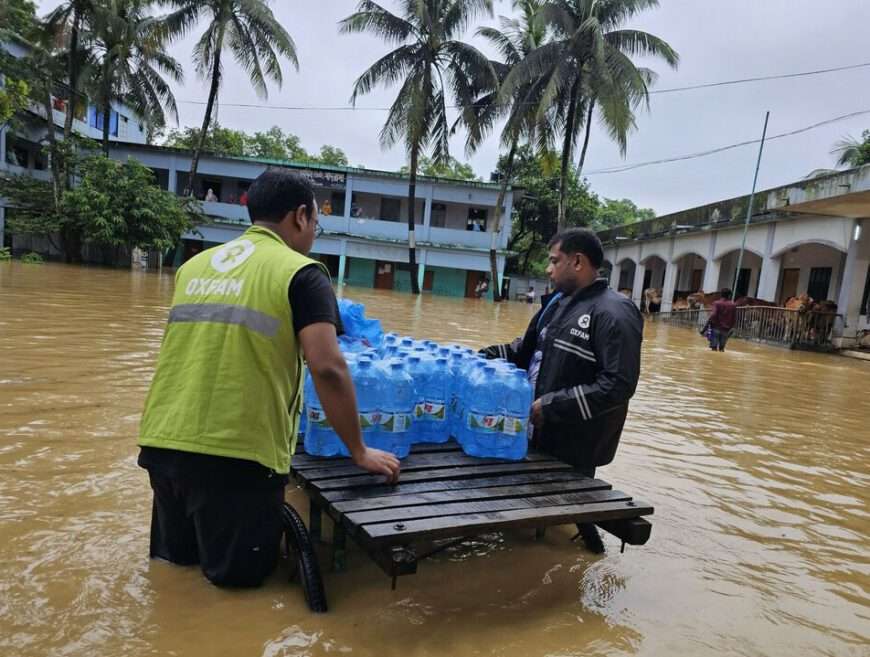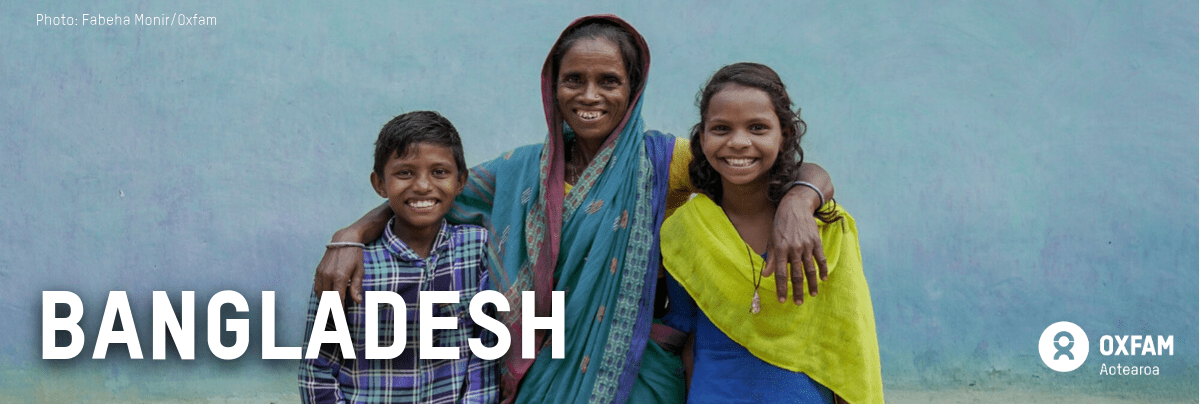
COUNTRY PROFILE
Bangladesh is facing one of its worst flooding crises in recent history. Relentless rainfall, overflowing rivers, and water releases from India have triggered flash floods across 12 districts, including Feni, Cumilla, Chittagong, and Sylhet. Over 5.7 million people have been affected, with at least 23 lives lost. Homes, infrastructure, and vast areas of farmland are destroyed, leaving millions without access to necessities like food, clean water, and medical care. The situation is particularly dire in remote areas, where blocked roads have severely hampered rescue and relief efforts.
Oxfam has swiftly mobilized to provide life-saving assistance to the most vulnerable communities. Our teams deliver essential supplies, conduct needs assessments and coordinate with local partners to ensure an effective and inclusive response. On the ground, Oxfam distributes essential supplies like water, ORS, dry food, and mobile charging points to those in need.
The Rohingya Crisis in Bangladesh is a protracted humanitarian and refugee crisis that emerged from the long-standing tensions between the Rohingya Muslim minority and the Myanmar government. In 2017, hundreds of thousands of Rohingya fled their homes, embarking on treacherous journeys to seek safety in neighbouring countries, particularly Bangladesh.
Bangladesh, already grappling with its own economic and social challenges, found itself burdened with hosting a massive influx of Rohingya refugees. Since 2017, the country has provided shelter to over a million Rohingya refugees, making it the world’s largest refugee settlement.
To date, the Rohingya Crisis remains one of the largest and most complex humanitarian crises in the region. The 2023 Rohingya Humanitarian Crisis Joint Response Plan [JRP] identifies more than 1.7 million people in need of humanitarian assistance, including the refugees sheltered in Cox’s Bazar and Bashan Char, as well as in host communities in Ukhiya and Teknaf.
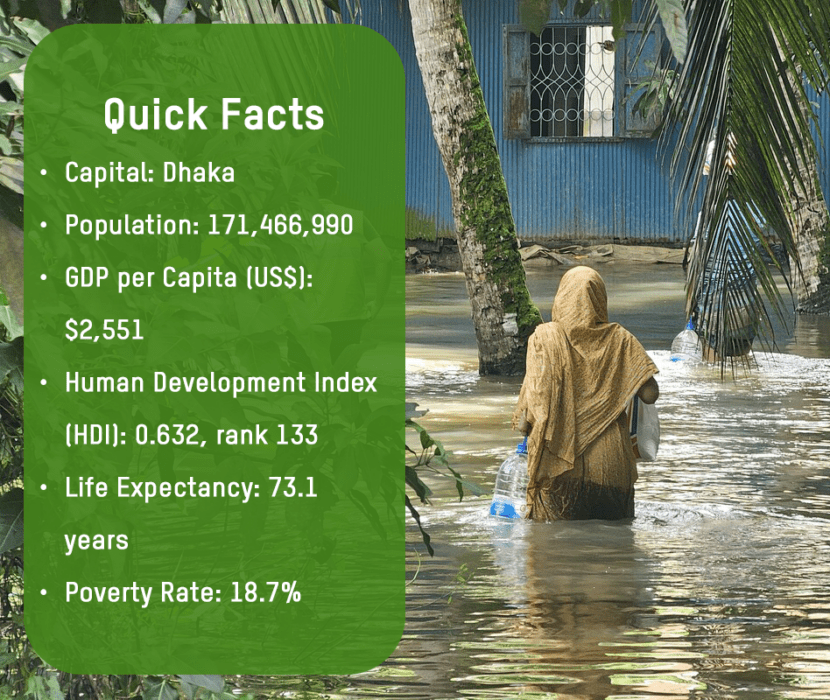
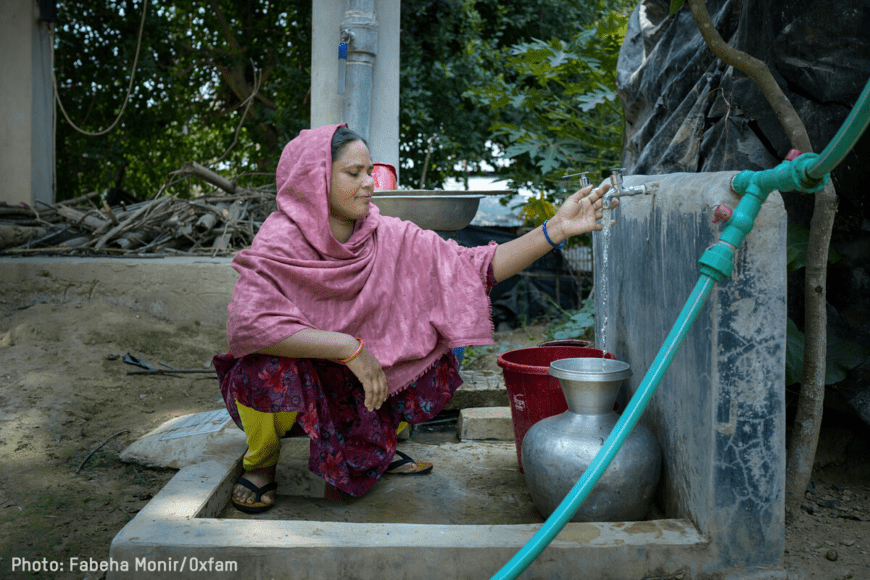
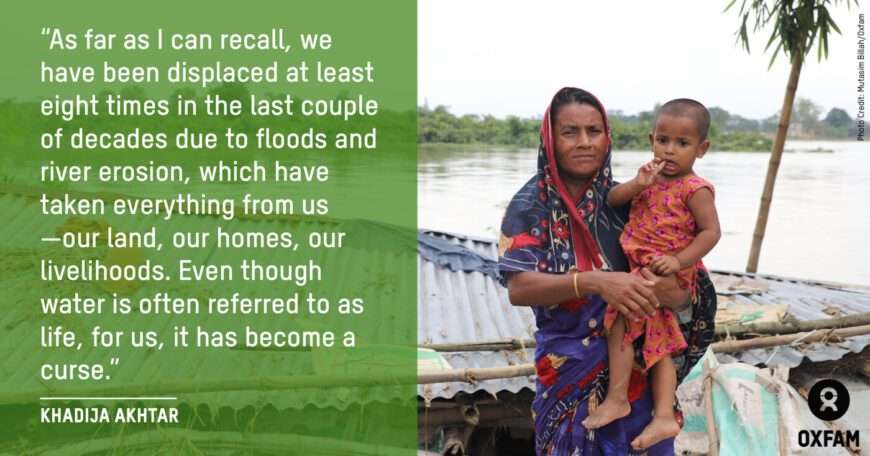
Key projects
Oxfam is working to enhance the safe drinking water supply and sanitation facilities in the villages in the northeastern Haor region which are resilient to flooding, and thereby improving the public health, dignity of the community, particularly women, adolescent girls and children. This will involve:
Enhancing Safe Water Supply: Based on the proven success and effectiveness of the system, Oxfam is installing solar-powered mini water supply networks and developing more reliable and sustainable water sources to ensure year-round access to safe drinking water. Water is then supplied to household premises for drinking, cooking, and personal hygiene purposes.
Improving Sanitation: Constructing hygienic and durable household-attached latrines that are easily accessible and ensure privacy and safety, especially for women and girls. This will include the use of semi-centralised septic tanks or raised sealed pit latrines in areas where the location and topography are challenging.
Promoting Hygiene Practices: Promoting better hygiene practices through community engagement, hygiene promotion sessions will be conducted through women’s platforms, as women are primarily responsible for water collection, cleaning children, and food preparation. The OXFAM approach of “Mom’s Magic Hand” will be incorporated into these sessions.
Building Community Resilience: During hygiene sessions, disaster-related information will be disseminated through women WASH platforms. Awareness messaging will emphasise various disaster risk reduction techniques, available facilities, and general awareness.
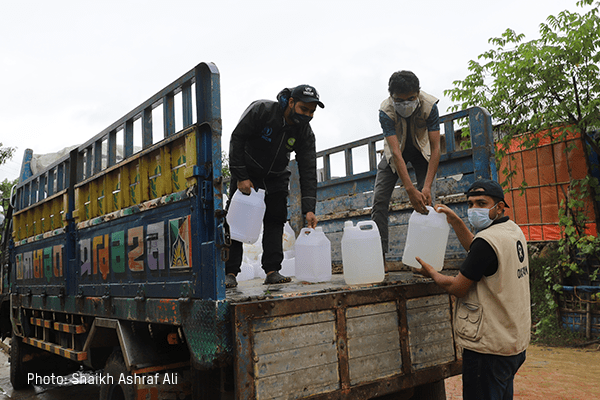
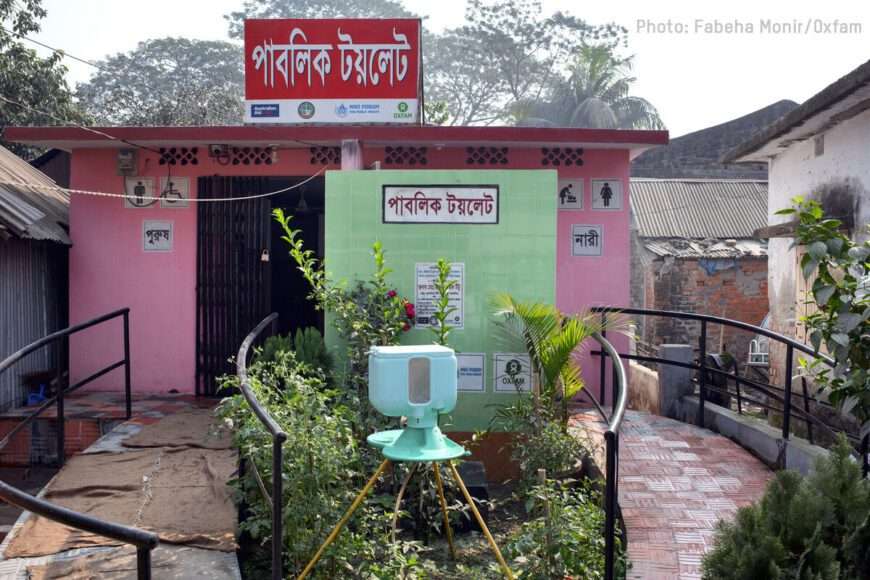
By supporting Oxfam you will
Help to provide water and sanitation and adapting to better deal with the crowded conditions.
Install sewage facilities that will eventually service over 100,000 people.
Drill wells and install water points, toilets and showers.
Help local communities cope with water shortages through deliveries of chlorinated water.
Help people stay healthy and hygienic with soap and other essentials.
Support and train community-based volunteers to emphasize the importance of clean water and good hygiene.
